|
|
|
|
Russian Self-Propelled Gun SU-76M
Reviewed by Brett Green
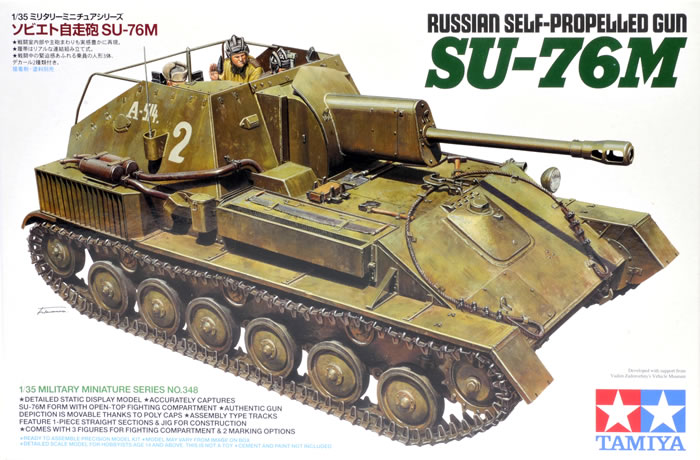
Summary
| Stock Number and Description | Tamiya 1:35 Russian Self-Propelled Gun SU-76M. Kit No. 35348 |
| Scale: | 1/35 |
| Media and Contents: | 401 parts in green plastic; 23 parts in grey plastic; 8 parts in clear; four polythene caps; 1 length of string; markings for three vehicles. |
| Price: | 3800 Yen |
| Review Type: | First Look |
| Advantages: | High level of detail; clever engineering; perfect fit; link and length tracks; includes three crew figures. |
| Disadvantages: | Some ejector pin circles. |
| Recommendation: | Highly Recommended. |
FirstLook
The SU-76 (Samokhodnaya Ustanovka 76) was a Soviet self-propelled gun used during and after World War II. The SU-76 was based on a lengthened and widened version of the T-70 light tank chassis. Its simple construction made it the second most produced Soviet armoured vehicle of World War II, after the T-34 tank.
The Su-76 weighed just 10.6 tonnes and was armed with the effective 76 mm ZIS-3Sh gun.
After 320 SU-76s had been made, the power-plant arrangement was changed to that of the T-70 - the two engines were mounted in tandem on the right hand side of the vehicle. The armoured roof over the gun compartment was also removed to improve access to and servicing of the weapon. This modified version, called the SU-76M, was placed in mass production in early 1943 and represented the vast bulk of production.

The SU-76M virtually replaced infantry tanks in the close support role. Its thin armour and open top made it vulnerable to antitank weapons, grenades, and small arms. Its light weight and low ground pressure gave it good mobility.
Crews liked the vehicle for its simplicity, reliability, and ease of use. However, the steering was also sometimes regarded as cumbersome. Its armour was also very light when compared to a German vehicle with a similar silhouette - the heavy Ferdinand/Elefant casemate tank destroyer of some 65 tonnes in weight.
FirstLook
The hallmarks of Tamiya’s recent military releases have been a high level of detail, clever engineering, simple parts breakdown and trouble-free construction. Tamiya has brought all of these attributes to their new 1:35 scale Su-76M.
Tamiya’s brand new Su-76M comprises 401 parts in dark green plastic, 23 parts in grey plastic (figures), eight in clear, a length of string, four polythene caps and markings for a choice of three vehicles. The relatively high parts count is mainly accounted for by individual track links.
The lower hull is broken down into the two sides, middle bulkhead and rear plate. Interior detail and stowage is then added to the rear section of the lower hull, including lots of stowed 76mm and PPSh-41 sub-machine gun ammunition, seats, radios and more. You’ll have to decide early on whether you want to paint these detail parts before or after assembly.

Moulding marks or ejector pin circles are mostly located where they cannot be seen on the finished model. The main exception is four raised cirecles on the inside of the rear door, but even these will be easy to scrape off and sand flat.
The forward hull and superstructure are also made up of individual plates.
Construction now moves on to the running gear, which offers separate swing arms and simple two-piece road wheels.
The tracks are a highlight of the kit. They are made up from a combination of individual links and two flat bottom runs. Detail on the outer surface is very well done. At the edges of the inside surfaces, there is an ejector pin circle that will be tricky to fill, but it will also be difficult to see on the finished model.

Tamiya provides a jig to set the correct sag in the upper track run after 34 of the individual links have been joined. Please note that this is not an assembly jig. If you use it as such, you’ll more than likely glue the links to the jig. Wait until the length is finished before you press it onto the jig.
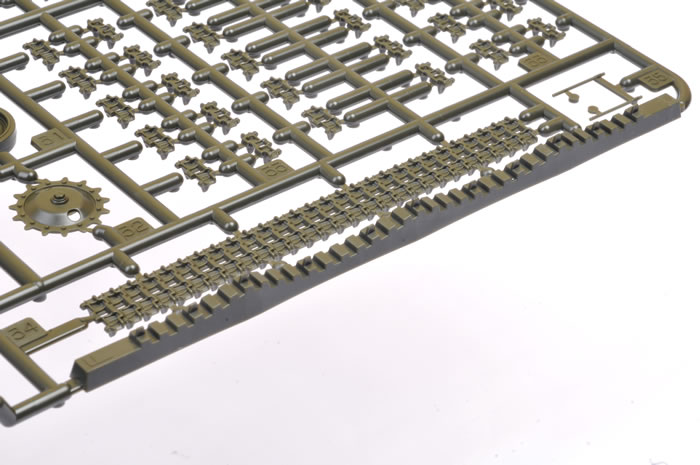
Smaller detail parts such as tools, tow cable guides and the gun barrel travel lock are delicately moulded.
The final sub-assembly is the 76mm gun. This is well detailed with a poseable breech block and the ability to elevate and traverse thanks to the use of polythene caps.
A clear part is provided for the headlight lens.
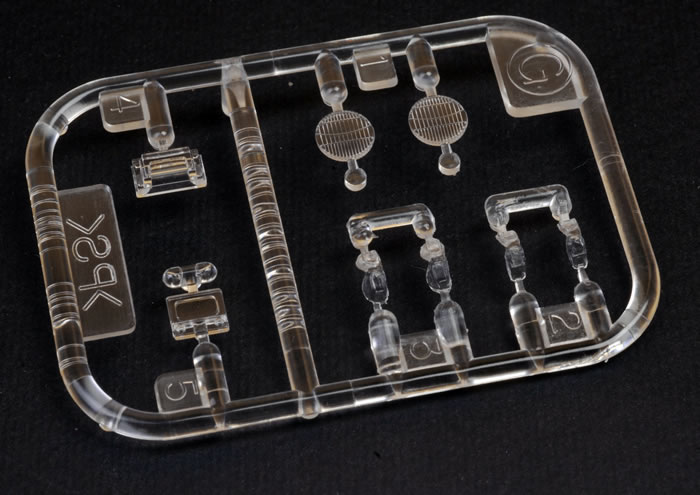
The plastic parts are rounded out with three excellent crew figures – a gunner, a loader and the Commander.
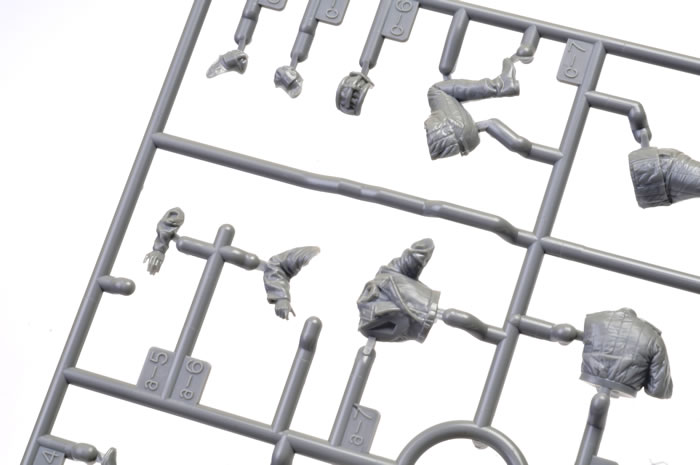
They are all well moulded and the facial detail is particularly nice.
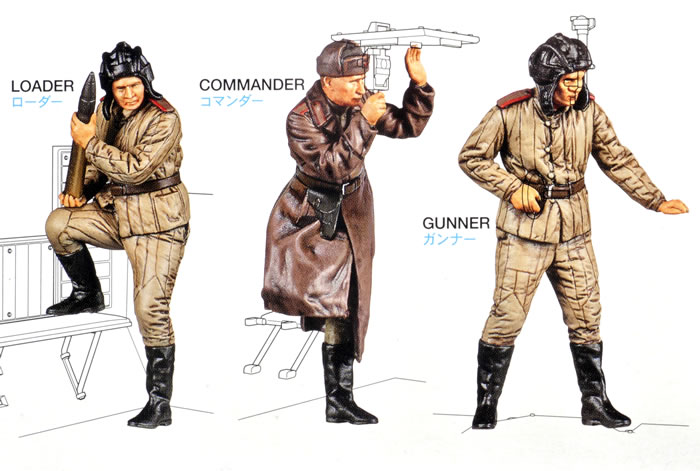
In fact, the Commander’s face bears an uncanny resemblance to a certain current world leader…

The only multimedia in the kit is a length of string for the tow cable.
Three simple marking options are provided for vehicles in overall 4BO.

The instructions are well laid out over 37 steps with clear illustrations supplemented by text directions where required. The section dealing with the tracks is especially well done.
Conclusion
Once again, Tamiya has delivered a well-detailed and easy to build model of an iconic vehicle.
The model features plenty of detail and stowage in the fighting compartment, and the addition of the three figures will provide an instant vignette.Highly Recommended.
Thanks to Tamiya for the sample
Tamiya kits are distributed in the UK by The Hobby Company Limited






















